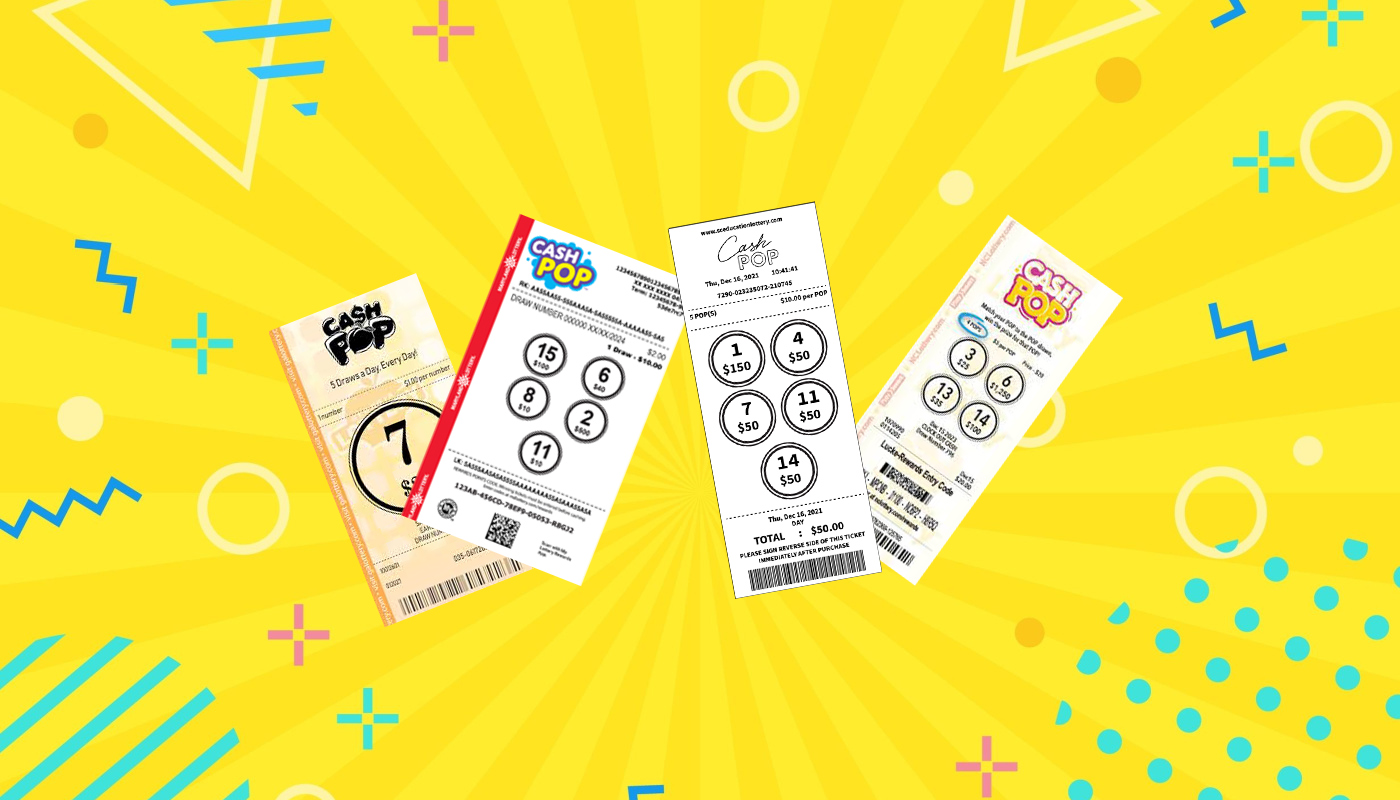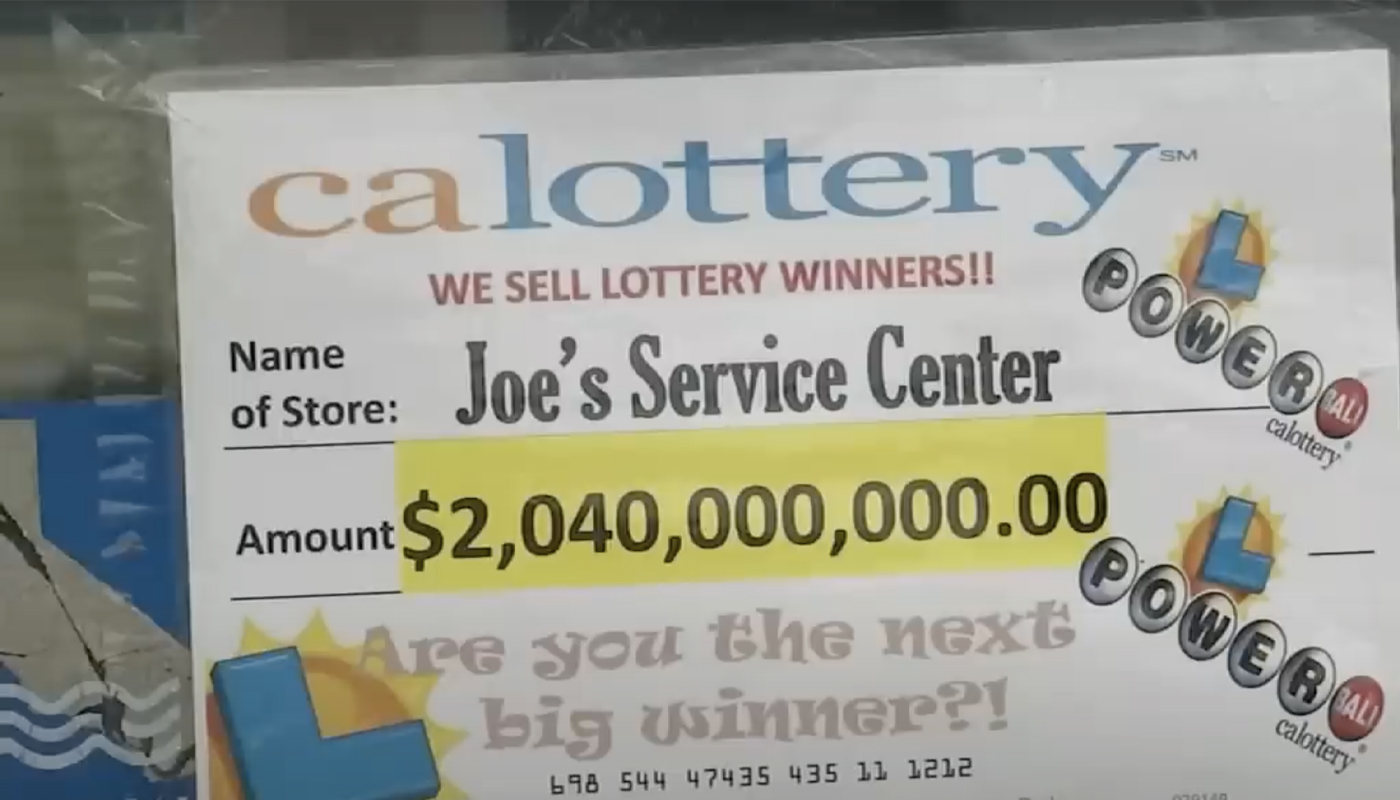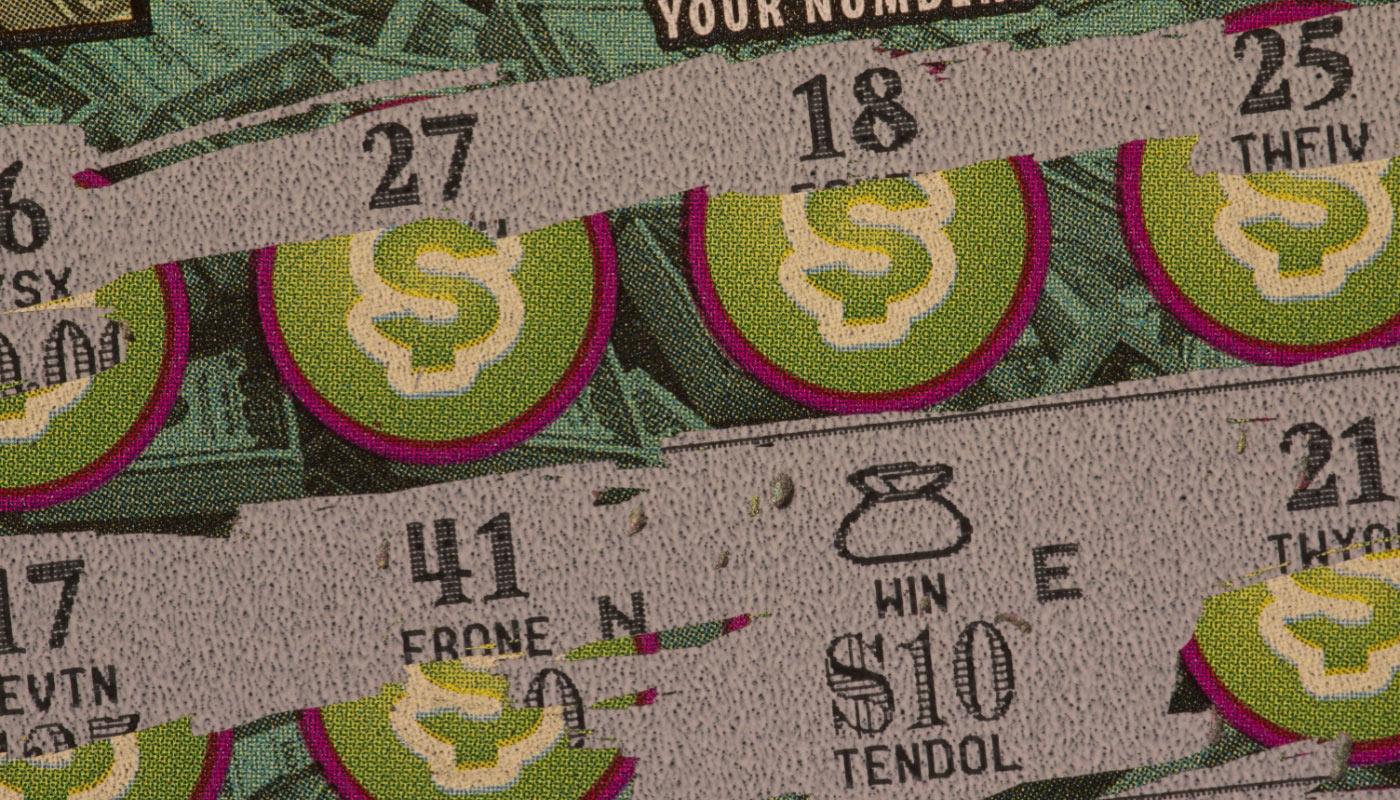
Columnist; Science and Academics
Like any popular game of chance, lotteries have evolved into countless variations worldwide, each designed to attract different types of players.
Cash Pop-style games deviate from the usual straightforward and classical multinumber draw model for life-changing dreams in terms of prize schedule and odds of winning. The lottery game is available in 16 states and has largely consistent rules. However, certain details like the drawing schedule, wager and top prize amounts, and tax calculations can vary by location.
In this article, we will see what makes the Cash Pop-style games so appealing and how they compare to the popular lotteries from a mathematical perspective.
Better odds of winning
The well-known “microscopic” odds of winning – at least for the top prizes – have not affected the popularity of classical lotteries much; experts studying the lottery phenomenon came up with psychological explanations for this fact. Yet the lottery companies have considered the target of enhancing the odds of winning when developing new lottery versions.
Reducing the size of a draw to four or three numbers resulted in better odds of winning, but the increase was not significant, while the 5- and 6-number draw lotteries remained the most attractive, due also to the magnitude of their jackpots.
The popular Pick 3, Pick 4, and Pick 5 lottery games in the US introduced new rules: drawing digits instead of numbers in a certain range, increasing the frequency of draws to at least daily, and expanding the prize definitions to include arrangements, not only combinations.
These versions proved attractive, even though their jackpots – either fixed or rollovers – did not compare in magnitude to those of the classical lotteries. Still, the odds of winning for the top prizes in Pick games remained very low, in the order of one in tens of thousands.
The Cash Pop-style lottery games introduced a brand new model, which blended simplicity with an investment-based fairness of assigning possible prizes. The draws' frequency ranges from two per day to one every four minutes, depending on the state.
While increasing the frequency of the draws is itself a way of enhancing the odds of winning over a definite period of playing, we should not forget that the draws are independent of each other, and the odds of winning are relevant only associated with one draw, so the investment is involved. Relative to one draw, the Cash Pop-style games have the highest odds of winning among all lottery games. Let's analyze these odds and other statistical indicators of Cash Pop-style lottery games.
Odds of winning Cash Pop
In Cash Pop-style games, there are only 15 numbers in the pool and only one number drawn, so the probability of hitting it with a simple line (one number played in this case) is 1 in 15, about 6.70%. This is by far the highest probability of winning a prize across the lotteries.
It's a kind of “casino probability” and not a lottery one. Think, for instance, of the probabilities associated with the lowest prizes in Powerball: 0.14% for two white balls and the red ball; 1.08% for one white ball and the red ball; and 2.60% for the red ball (but note that these prizes are only $4-$7!).
Other popular lotteries offer 1 in thousands or 1 in hundreds odds in their lowest prize category and nearby prizes, not including the top prizes with their microscopic odds. This order of magnitude is given by the combinatorial nature of these lotteries and the size of their draws being more than one, which is not the case with the Cash Pop-style games.
But as in every game of chance, winning probability is not all that counts. Prizes are important, too. As a general principle in gambling, higher probabilities of winning are always counterbalanced by lower prizes or lower profit rates.
Prizes and their probabilities
In Cash Pop-style games, prizes range from a few dollars to a few thousand, depending on the state lottery and the wager.
A specific feature of this game style, which makes it special among lotteries, is that the prizes are assigned before the number draw. The prize assignment is made randomly, but it depends on the wager – the higher your wager, the higher the chances that your ticket will be assigned a higher prize. After your prize is assigned, you will know for sure that you can win that prize with a 6.70% probability.
So, actually, the Cash Pop-style games have two draws: one for the prize and one for the winning number. The odds associated with the prize draw are the weights that the house assigned to the possible prizes – the higher the prize, the lower its odds, which is a fair principle, yet favors the house.
To play informed, you must know the odds associated with both draws. They should be displayed on the odds page of the Cash Pop-style game you choose, but you should read and interpret correctly that information: The odds may be displayed in a table as 'odds of winning' in a single column or specifically for the two draws, in two columns.
In the latter case, you should see the odds of having each possible prize on your ticket and the combined odds of winning that prize before you buy the ticket. In the former case, you should multiply by 15 the odds labeled as 'odds of winning' a certain prize to find the odds of that prize being assigned.
For example, for the Mississippi Cash Pop, the odds table displays the odds for both the prizes and the winner.
If a line in this table – say for the $1 wager and $7 prize – holds two values, one for the prize and one for the win, that is, 1 in 5 and 1 in 75, this means that the odds for you to be assigned a $7 prize before you buy the ticket at that price are 1 in 5 (20%) and the odds of winning that prize (still before buying the ticket) are 1 in 75. After having your ticket printed, the odds of winning that prize are always 1 in 15, regardless of the assigned prize.
When tables show only one odds column, that's your chance of winning each prize. To find your odds of being assigned that prize, you need an arithmetical operation. Example: $5 wager, 1-in-120 odds of winning $50. Then, do (1/120) x 15 = 1/8. The odds for the $50 prize to be assigned on your ticket before buying it are 1 in 8 and 1 in 120 for you to win that prize.
The double-draw feature makes the game appealing and unique, as there is one more uncertain element to follow. This feature, along with the size of the draw and transparency of the odds, makes it look like a two-step raffle, which reflects simplicity and fairness, characteristics sought by many gamblers.
The magnitude of the odds of winning, compared to those of the other popular lotteries, makes the “raffle lottery” seem suitable for those aiming at occasional or even regular small profits, which the classical lotteries do not offer except for those playing in teams or syndicates.
Let's see exactly what one player should expect on average as profit/loss in the Cash Pop-style games.
Expected value and house edge in Cash Pop
When computing the expected value of a Cash Pop bet for a given wager, we should employ, along with all possible prizes in net amount, the probabilities associated with both the prize draw and the number draw.
Each Cash Pop-style game has its own statistical indicators given by its parameters; however, these parameters are not much different from one game to another. Staying with the same example of the Mississippi Cash Pop game, we can take these particular results as reference indicators for Cash Pop-style games in general.
First, let's find the expected value of a bet with the minimum wager, that is, $1. The odds table of this game for $1 wager gives us all the needed inputs:
Prize and odds for $1 wager
| Prize | Odds of Winning |
|---|---|
|
$5 |
1 in 31 |
|
$7 |
1 in 75 |
|
$10 |
1 in 105 |
|
$15 |
1 in 180 |
|
$20 |
1 in 270 |
|
$25 |
1 in 630 |
|
$50 |
1 in 2,250 |
|
$100 |
1 in 4,125 |
|
$250 |
1 in 15,000 |
EV = (1/31) x (5 – 1) + (1/75) x (7 – 1) + (1/105) x (10 – 1) + (1/180) x (15 – 1) + (1/270) x (20 – 1) + (1/630) x (25 – 1) + (1/2,250) x (50 – 1) + (1/4,125) x (100 – 1) + (1/15,000) x (250 – 1) – (14/15) x 1 = –0.39017, that is, about –39%.
The house edge of this bet is HE = 39%. You should expect to lose 39% of your overall wager if playing this bet indefinitely.
This house edge is far lower than that of the most popular lotteries, but a bit higher than the average house edge in Powerball (estimated at about 33% for an average jackpot of $300 million), still far higher than the house edge of any casino game.
Let's also compute the EV of a bet with the maximal wager, $10, in our example. The odds table for this wager is as follows:
Prize and odds for $10 wager
| Prize | Odds of Winning |
|---|---|
|
$50 |
1 in 32 |
|
$70 |
1 in 105 |
|
$100 |
1 in 120 |
|
$150 |
1 in 150 |
|
$200 |
1 in 180 |
|
$250 |
1 in 240 |
|
$500 |
1 in 1,350 |
|
$1,000 |
1 in 4,125 |
|
$2,500 |
1 in 15,000 |
EV = (1/32) x (50 – 10) + (1/105) x (70 – 10) + (1/120) x (100 – 10) + (1/150) x (150 – 10) + (1/180) x (200 – 10) + (1/240) x (250 – 10) + (1/1,350) x (500 – 10) + (1/4,125) x (1000 – 10) + (1/15,000) x (2500 – 10) – (14/15) x 10 = –$2.166, or, as a percentage, 21.66%. House edge of this bet is HE = 21.66%.
Observe that HE is almost half of the one for the minimum wager bet. If we were to compute the HE for all possible wagers, the order of the values would be preserved – the lower the wager, the higher the house edge. This results in the recommendation to play this lottery with the maximal wager, for long-run (regular) play.
However, these numbers also indicate that those attractive odds of winning (compared to other lotteries) do not necessarily result in much higher monetary gains in the long run, as we saw, the average gain as expected value for the minimal wager is about the same as in Powerball.
Guaranteed win when covering all numbers. Really?
Cash Pop-style games offer the option of playing more than one number on your ticket.
You can cover up to all 15 numbers, which, of course, means you will hit one. This option is also present in other lotteries, where you may cover as many combinations of numbers as possible with your tickets.
Of course, your investment increases proportionally with the number of lines. The difference is that in Cash Pop-style games, your investment is limited to $10 x 15 = $150 (down to a minimum $15 for a $1 wager), while in combinatorial lotteries, that total price is huge, so this strategy is not feasible.
For instance, in a 6/49 lottery game, covering only one-fifth of the possible combinations means purchasing tickets with 2,796,764 lines, which would cost you (or your team) millions of dollars. Even if such an investment is possible and the prize is huge, the risk is far higher than that of an investment of $150.
This 'cover all' option is advertised as such; however, it can be tricky for those remaining at words. “Guaranteed win” should be meant in terms of winning a prize (any), but not in terms of profit, as we will see further.
Probability of making a profit with the 'cover all' option
Probabilistically, the event of making a profit when playing the 'cover all' option is equivalent to the event 'the drawn number has assigned a prize higher than your investment'. Its probability is then the sum of all probabilities associated with winning the prizes higher than your investment.
Let's take an example from the Mississippi Cash Pop with the maximum wager of $10. Investment is $150, so you have to win a prize of $200 up to $2,500 to make a Profit. The probability of that happening is:
P(positive profit) = P($200) + P($250) + P($500) + P($1,000) + P($2,500) = 0.00555 + 0.00416 + 0.00074 + 0.00024 + 0.00006 = 0.01075 = 1.075%.
There is only a 1% chance of making a profit in this case, even though winning a prize is guaranteed, instead of the 6.70% if playing just one number (where the profit is ensured only if your number is drawn).
To calculate the probability of not losing any money (which includes the event of getting even with zero profit), we should add to the sum above the probability of winning a $150 prize. The new probability is P(positive or zero profit) = 0.0174 = 1.74%.
Let's also see what the expected value of the 'cover all' bet with a $10 wager is:
EV = (1/32) x (– 100) + (1/105) x (– 80) + (1/120) x (– 50) + (1/150) x 0 + (1/180) x 50 + (1/240) x 100 + (1/1,350) x 350 + (1/4,125) x 850 + (1/15,000) x 2,350 = –$2.987, or, as a percentage, –29.87%.
The house edge of this bet is HE = 29.87%, higher than the house edge of a single-number bet.
The full coverage option is irrelevant in terms of safety and, due to the above numbers, is not recommended in both short-run or isolated play and long-run play. This recommendation stands for any wager.
Such a conclusion raises the question of an ethical advertisement of the 'cover all' option.
While the lottery is typically known as a transparent and clearly described game, exceptions to this rule may occasionally occur, where players may be misled by inadequate wording. Lottery may have its own slots-like tricks and false myths fueled by inadequate descriptions, but the phenomenon is marginal.
Conclusion
The “unusually” high odds of winning in Cash Pop-style games make this lottery appealing and suitable for those chasing occasional or regular small profits.
The double-draw feature of the game (including a draw for the size of the possible prize) is also appealing; however, it makes the odds of winning a certain prize go down below 1 in 15.
Despite the acceptable odds of winning for a lottery, the house edge of this game – far lower than that of the most popular lotteries and a bit higher than the average house edge in Powerball – is still far higher than the house edge of any casino game. In terms of expected value, it is recommended to play at the maximum stake of $10.
The 'cover all' option may be misleading if not adequately described. The probability of making any profit with the 'cover all' option is near 1%, about six times lower than the probability of winning something with one number.




















Comments